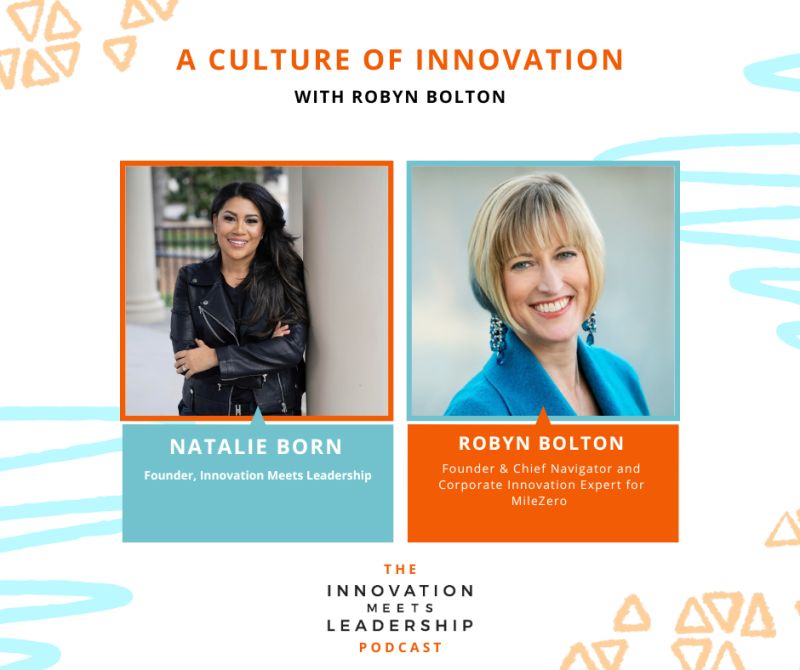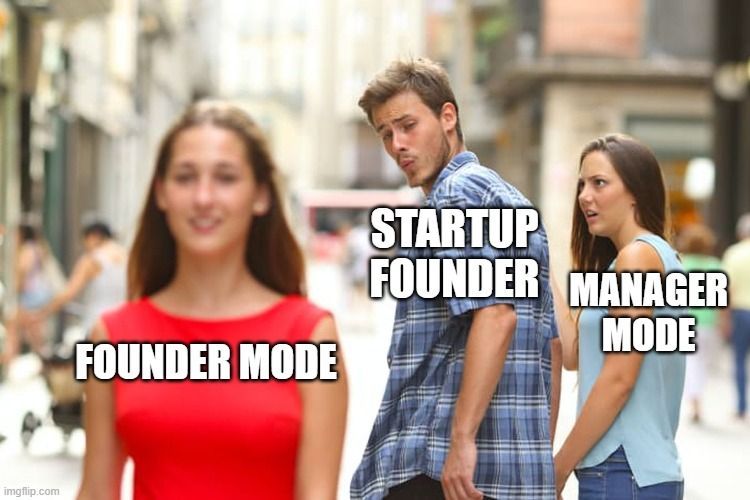
by Robyn Bolton | Oct 1, 2024 | Innovation, Leadership, Metrics, Stories & Examples, Strategy
In the often murky world of corporate communication, a leaked MrBeast document has emerged as a beacon of clarity. Far from being your typical vague, jargon-filled memo, this onboarding document is a crystal-clear recipe for success that’s as refreshing as it is rare.
But first, let’s address the elephant in the room. MrBeast’s empire isn’t without its share of controversy. Reports of toxic work environments, unsafe conditions for contestants, and allegations of rigged games cast a shadow over his content creation machine and his leadership capabilities. These are serious issues that merit investigation and discussion. As a result, this post isn’t an endorsement of MrBeast as a leader, it’s an endorsement of an onboarding document that he wrote.
The Secret Sauce: Clarity Meets Innovation
What sets this document apart is its razor-sharp clarity and relentless focus on creativity. Unlike the vague platitudes that plague many corporate communications, job descriptions, and performance matrixes, this document clearly outlines expectations, success metrics, and the strategies and tactics to fuel continuous innovation.
This clarity is transformative for people and organizations. When team members understand both the guardrails and the goals, they channel their creative energy into groundbreaking ideas rather than second-guessing their approach and worrying about repercussions.
Expectations: Always Be Learning
The first principle is a clear directive: always be learning. In MrBeast’s world, this isn’t just about personal growth—it’s about staying ahead in a rapidly changing digital landscape. This commitment to continuous learning fuels innovation by ensuring the team is constantly exploring new technologies, trends, and creative techniques.
While some see the definition of A, B, and C-players as evidence of a toxic workplace, the fact is that it’s the reality in most workplaces. It’s the absence of clarity, usually disguised by claims of family-like cultures that value diversity, that makes workplaces toxic.
Metrics: The Start of a Feedback Loop
The focus on specific success metrics like Click-Through Rate and Average View Duration isn’t just about measurement—it’s about creating a feedback loop for innovation. Clear benchmarks developed over time allow teams to quickly assess the impact of new ideas and iterate accordingly. It also removes the temptation and ability to “move the goalposts” to create the appearance of success.
Strategy: Structure Meets Creativity
After describing what success looks like for employees and how they’ll be measured, the document outlines a structured content formula akin to an innovation strategy. It provides a clear framework of priorities, goals, and boundaries while encouraging creative experimentation within those boundaries.
Starting with a step-by-step guide to making videos with a “wow” factor, the document also emphasizes the criticality of focusing on “critical components” and managing dependencies and
Far from the usual corporate claims that direction and “how to’s” constrain creativity and disempower employees, this approach creates a safety net that allows employees to be successful while still pushing the envelope of what’s possible in content creation.
How to Become Your Version of (a non-controversial) Mr. Beast
You don’t have to be a content creator, social media savant, or company founder to follow MrBeast’s lead. You have to do something much more difficult – communicate clearly and consistently.
- Clearly define what success looks like (and doesn’t) for your employees and projects.
- Establish frameworks that encourage bold ideas while maintaining focus.
- Define objective success metrics and consistently measure, track, and use them.
This leaked MrBeast document offers more than just a glimpse into a YouTube empire; it’s a masterclass in leadership in the era of hybrid workplaces, geographically dispersed teams, and emerging cultures and norms.
The document’s approach shows that innovation doesn’t have to be chaotic. By providing clear expectations and frameworks, leaders can create an environment where creativity thrives, and groundbreaking ideas can be rapidly developed and implemented.
When viewed in the bigger context of the MrBeast organization, however, the document is also a reminder that no matter how clear you think your communication is, you must be vigilant for those who claim that bad behavior is just a “misunderstanding.” Leaders know that no amount of views, clicks, or revenue is worth sacrificing the well-being of their teams.

by Robyn Bolton | Sep 18, 2024 | Podcasts

by Robyn Bolton | Sep 17, 2024 | Leadership, Stories & Examples, Tips, Tricks, & Tools
How many times have you proposed a new idea and been told, “We can’t do that?” Probably quite a few. My favorite memory of being told, “We can’t do that,” happened many years ago while working with a client in the publishing industry:
Client: We can’t do that.
Me: Why?
Client: Because we already tried it, and it didn’t work.
Me: When did you try it?
Client: 1972
Me: Well, things certainly haven’t changed since 1972, so you’re right, we definitely shouldn’t try again.
I can only assume they appreciated my sarcasm as much as the idea because we eventually did try the idea, and, 30+ years later, it did work. But the client never would have enjoyed that success if my team and I had not seen through “we can’t do that” and helped them admit (confess) what they really meant.
Quick acknowledgment
Yes, sometimes “We can’t do that” is true. Laws and regulations define what can and can’t be done. But they are rarely as binary as people make them out to be. In those gray areas, the lie of “we can’t do that” obscures the truth of won’t, not able to, and don’t care.
“I won’t do it.”
When you hear “can’t,” it usually means “won’t.” Sometimes, the “won’t” is for a good reason – “I won’t do the dishes tonight because I have an urgent deadline, and if I don’t deliver, my job is at risk.” Sometimes, the “won’t” isn’t for a good reason – “I won’t do the dishes because I don’t want to.” When that’s the case, “won’t” becomes “can’t” in the hope that the person making the request backs off and finds another solution.
For my client, “We can’t do that” actually meant, “I won’t do that because it failed before and, even though that was thirty years ago, I’m afraid it will fail again, and I will be embarrassed, and it may impact my reputation and job security.”
You can’t work with “can’t.” You can work with “won’t.” When someone “won’t” do something, it’s because there’s a barrier, real or perceived. By understanding the barrier, you can work together to understand, remove, or find a way around it.
“I’m not able to do it.”
“Can’t” may also come with unspoken caveats. We can’t do that because we’ve never done it before and are scared. We can’t do that because it is outside the scope of our work. We can’t do that because we don’t know how.
Like “won’t,” you can work with “not able to” to understand the gap between where you are now and where you want to go. If it’s because you’re scared of doing something new, you can have conversations to get smarter about the topic or run small experiments to get real-world learnings. If you’re not able to do something because it’s not within your scope of work, you can expand your scope or work with people who have it in their scope. If you don’t know how, you can talk to people, take classes, and watch videos to learn how.
“I don’t care.”
As brave as it is devastating, “we can’t do that” can mean “I don’t care enough to do that.”
Executives rarely admit to not caring, but you see it in their actions. When they say that innovation and growth are important but don’t fund them or pull resources at the first sign of a wobble in the business, they don’t care. If they did care, they would try to find a way to keep investing and supporting the things they say are priorities.
Exploring options, trying, making an effort—that’s the difference between “I won’t do it” and “I don’t care.” “I won’t do that” is overcome through logic and action because the executive is intellectually and practically open to options. “I don’t care” requires someone to change their priorities, beliefs, and self-perception, changes that require major personal, societal, or economic events.
Now it’s your turn to tell the truth
Are you willing to ask the questions to find them?

by Robyn Bolton | Sep 11, 2024 | Leadership
Paul Graham, cofounder of Y Combinator, was so inspired by a speech by Airbnb cofounder and CEO that he wrote an essay about well-intentioned advice that, to scale a business, founders must shift modes and become managers.
It went viral.
In the essay, he argued that:
In effect there are two different ways to run a company: founder mode and manager mode. Till now most people even in Silicon Valley have implicitly assumed that scaling a startup meant switching to manager mode. But we can infer the existence of another mode from the dismay of founders who’ve tried it, and the success of their attempts to escape from it.
With curiosity and an open mind, I read on.
I finished with a deep sigh and an eye roll.
This is why.
Manager Mode: The realm of liars and professional fakers
On the off chance that you thought Graham’s essay would be a balanced and reflective examination of management styles in different corporate contexts, his description of Manager Mode should relieve you of that thought:
The way managers are taught to run companies seems to be like modular design in the sense that you treat subtrees of the org chart as black boxes. You tell your direct reports what to do, and it’s up to them to figure out how. But you don’t get involved in the details of what they do. That would be micromanaging them, which is bad.
Hire good people and give them room to do their jobs. Sounds great when it’s described that way, doesn’t it? Except in practice, judging from the report of founder after founder, what this often turns out to mean is: hire professional fakers and let them drive the company into the ground.
Later, he writes about how founders are gaslit into adopting Manager Mode from every angle, including by “VCs who haven’t been founders themselves don’t know how founders should run companies, and C-level execs, as a class, include some of the most skillful liars in the world.”
Founder Mode: A meritocracy of lifelong learners
For Graham, Founder Mode boils down to two things:
- Sweating the details
- Engaging with employees throughout the organization beyond just direct reports. He cites Steve Jobs’ practice of holding “an annual retreat for what he considered the 100 most important people at Apple, and these were not the 100 people highest on the org chart.”
To his credit, Graham acknowledges that getting involved in the details is micromanaging, “which is bad,” and that delegation is required because “founders can’t keep running a 2000 person company the way they ran it when it had 20.” A week later, he acknowledged that female founders “don’t have permission to run their companies in Founder Mode the same way men can.”
Yet he persists in believing that Founder, not Manager, Mode is critical to success,
“Look at what founders have achieved already, and yet they’ve achieved this against a headwind of bad advice. Imagine what they’ll do once we can tell them how to run their companies like Steve Jobs instead of John Sculley.”
Leader Mode: Manager Mode + Founder Mode
The essay is interesting, but I have real issues with two of his key points:
- Professional managers are disconnected from the people and businesses they manage, and as a result, their practices and behaviors are inconsistent with startup success.
- Founders should ignore conventional wisdom and micromanage to their heart’s content.
Most “professional managers” I’ve met are deeply connected to the people they manage, committed to the businesses they operate, and act with integrity and authenticity. They are a far cry from the “professional fakers” and “skillful liars” Graham describes.
Most founders I’ve met should not be allowed near the details once they have a team in place. Their meddling, need for control, and soul-crushing FOMO (Fear of Missing Out) lead to chaos, burnout, and failure.
The truth is, it’s contextual. The leaders I know switch between Founder and Manager mode based on the context. They work with the passion of founders, trust with the confidence of managers, and are smart and humble enough to accept feedback when they go too far in one direction or the other.
Being both manager and founder isn’t just the essence of being a leader. It’s the essence of being a successful corporate innovator. You are a founder, investing in, advocating for, and sweating the details of ambiguous and risky work. And you are a manager navigating the economic, operational, and political minefields that govern the core business and fund your paycheck and your team.

by Robyn Bolton | Aug 28, 2024 | Innovation, Leadership, Tips, Tricks, & Tools
You were born creative. As an infant, you had to figure many things out—how to get fed or changed, get help or attention, and make a onesie covered in spit-up still look adorable. As you grew older, your creativity grew, too. You drew pictures, wrote stories, played dress-up, and acted out imaginary stories.
Then you went to school, and it was time to be serious. Suddenly, creativity had a time and place. It became an elective or a hobby. Something you did just enough of to be “well-rounded” but not so much that you would be judged irresponsible or impractical.
When you entered the “real world,” your job determined whether you were creative. Advertising, design, marketing, innovation? Creative. Business, medicine, law, engineering? Not creative.
As if Job-title-a-determinant-of-creativity wasn’t silly enough, in 2022, a paper was published in the Journal of Applied Psychology that declared that, based on a meta-analysis of 259 studies (n=79,915), there is a “male advantage in creative performance.”
Somewhere, Don Draper, Pablo Picasso, and Norman Mailer high-fived.
But, as every good researcher (and innovator) knows, the headline is rarely the truth. The truth is that it’s contextual and complicated, and everything from how the original studies collected data to how “creativity” was defined matters.
But that’s not what got reported. It’s also not what people remember when they reference this study (and I have heard more than a few people invoke these findings in the three years since publication).
That is why I was happy to see Fortune report on a new study just published in the Journal of Applied Psychology. The study cites findings from a meta-analysis of 753 studies (n=265,762 individuals) that show men and women are equally creative. When “usefulness (of an idea) is explicitly incorporated in creativity assessment,” women’s creativity is “stronger.”
Somewhere, Mary Wells Lawrence, Frida Kahlo, and Virginia Woolf high-fived.
Of course, this finding is also contextual.
What makes someone “creative?”
Both studies defined creativity as “the generation of novel and useful ideas.”
However, while the first study focused on how context drives creativity, the second study looked deeper, focusing on two essential elements of creativity: risk-taking and empathy. The authors argued that risk-taking is critical to generating novel ideas, while empathy is essential to developing useful ideas.
Does gender influence creativity?
It can. But even when it does, it doesn’t make one gender more or less creative than the other.
Given “contextual moderators” like country-level culture, industry gender composition, and role status, men tend to follow an “agentic pathway” (creativity via risk-taking), so they are more likely to generate novel ideas.
However, given the same contextual moderators, women follow a “communal pathway” (creativity via empathy), so they are more likely to generate useful ideas.
How you can use this to maximize creativity
Innovation and creativity go hand in hand. Both focus on creating something new (novel) and valuable (useful). So, to maximize innovation within your team or organization, maximize creativity by:
- Explicitly incorporate novelty and usefulness in assessment criteria. If you focus only on usefulness, you’ll end up with extremely safe and incremental improvements. If you focus only on novelty, you’ll end up with impractical and useless ideas.
- Recruit for risk-taking and empathy. While the manifestation of these two skills tends to fall along gender lines, don’t be sexist and assume that’s always the case. When seeking people to join your team or your brainstorming session, find people who have demonstrated strong risk-taking or empathy-focused behaviors and invite them in.
- Always consider the context. Just as “contextual moderators” impact people’s creative pathways, so too does the environment you create. If you want people to take risks, be vulnerable, and exhibit empathy, you must establish a psychologically safe environment first. And that starts with making sure there aren’t any “tokens” (one of a “type”) in the group.
Which brings us back to the beginning.
You ARE creative.
How will you be creative today?




